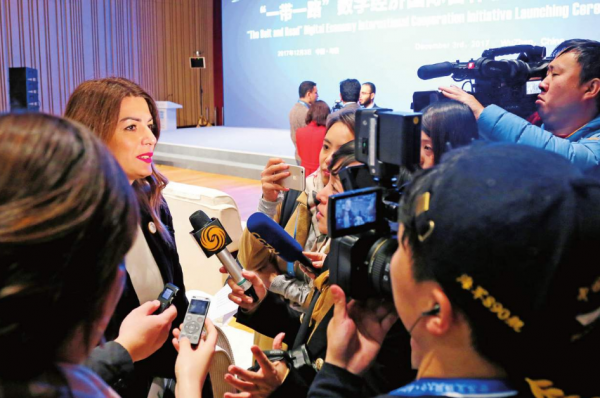Media & Information Literacy


Media and Information Literacy
The vast amount of information available online can be a key resource when carrying out research, but appropriate knowledge and skills must be applied. Information needs to be found and evaluated correctly in order to create factually-sound, well-researched outputs. The Information Literacy course builds these knowledge and skills to help you in your research and report creation activities.
Course Title
WSQ ICDL Information Literacy
Course Objectives
On completion of this unit, the learner will have the knowledge and application skills in carrying out structured, effective research online and publish outputs online.
Course Content
- Search for online information to meet information requirements using appropriate search techniques for search engines and social media applications.
- Evaluate online information obtained against information requirements by applying a set of evaluation criteria.
- Organise online information to meet information requirements by applying appropriate considerations
Certification
Upon being assessed as “Competent”, learners will be awarded with a WSQ Statement of Attainment (SOA) from Workforce Development Agency (WDA).
- Course Reference NumberCRS-Q-0039910-ES
- Duration2 Days
- Mode of TrainingClassroom
Full Sporeans 21 – 39 yrs old /
PRs 21 yrs old & aboveSporeans 40 yrs old & above
(MCES1)$423.35 $151.35 $58.85 Funding Validity Period
07 Sep 2019 to 06 Sep 2021

http://www.coursewsq.com/
The word “media” comes from the Latin Medius, which means something in between.The media is a medium for spreading information.It refers to the tool, channel, carrier, intermediary or technical means used by people to transmit and obtain information.Media can also be seen as all the technical means to realize the transmission of information from the information source to the trustee.Media has two meanings: one is the object that carries information, and the other is the entity that stores, presents, processes and transmits information.
“Media” is next to the character “female”, and in “Poem, Weifeng, and vagang” it says, “It is not a good media for children in the early days”, and it is not well known that there is no cloud in the sky, nor rain, and no media in the earth, for marriage.It can be seen that long ago, “media” mainly played an intermediary role in the marriage of men and women.[1]
I describe media in Chinese and English by spelling meit.Class words are used to record, zoom in, fast-forward, pause
directory
1 the category
▪ Major media
Forced the division
2 function
3 Common Terms
Category editing
Major media
1. Television.
2. Broadcast.
3. Newspapers.
4. Periodicals (magazines).
The Internet.
6. Cell phones.
7. Direct mail.
The four traditional media are: TELEVISION, radio, newspapers, periodicals (magazines), in addition, there should also be outdoor media, such as street sign light box advertising space.
With the development of science and technology, new media are gradually derived, such as IPTV, e-magazine, etc. They are developed on the basis of traditional media, but they are qualitatively different from traditional media.
division
CCITT (International Telephone and Telegraph Advisory Committee)
The media
The media
Ttee on International Telephone and Telegraph, a branch of the ITU, the International Telecommunications Union, divides media into five categories:
(1) Perception Medium: Refers to the Medium that ACTS directly on people’s sensory organs and makes people produce direct Perception.A sound that causes an auditory response, an image that causes a visual response, etc.
(2) Representation Medium: It refers to the intermediary Medium that transmits the sense media, i.e. the code used for data exchange.Such as image coding (JPEG, MPEG, etc.), text coding (ASCII code, GB2312, etc.) and sound coding, etc.
(3) Presentation Medium: Refers to the Medium for information input and output.Such as keyboard, mouse, scanner, microphone, camera and other input media;Displays, printers and speakers are the output media.
(4) Storage Medium: Refers to the physical Medium used to store the presentation media.Such as hard disk, floppy disk, disk, CD, ROM and RAM, etc.
(5) Transmission Medium: Refers to the physical Medium of Transmission media.Such as cables, optical cables, etc.
What we usually call “Media” includes two meanings.First, it refers to the physical carrier of information (that is, the entity that stores and transmits information), such as books, wall charts, disks, optical disks, magnetic tapes and related playing devices;Another layer of meaning refers to the expression (or dissemination) of information, such as text, sound, images, animation, etc.The media in the multimedia computer refers to the latter, that is, the computer can not only process the word, numerical value and so on information, but also can process the sound, the graph, the television image and so on various forms of information.
To better understand the above five types of media, take Figure 1 as an example to illustrate.
Figure 1 media
The video that the user sees xxx. FLV is the sense media.
This video is in FLV format, which is called presentation media.
The monitor that presents this video is the presentation medium.
The hard disk on which this video is stored is the storage medium.
Cables, optical cables, routers and other equipment used for transmission between the server and the display shall belong to the transmission media.
Function to edit
The media mainly has the following functions:
1. Supervise and correct undesirable phenomena.
2. Coordinate social relations.
3. Inherit culture.
4. Provide entertainment.
5. Lead the crowd.
6. Disseminate information.
Common term editing
Audience: Audience refers to the receivers of information communication, including readers of newspapers and books, listeners of radio, audiences of movies and TELEVISION, and Internet users.From the macro point of view, the audience is a huge collection, and from the micro point of view, there are people with rich social diversity.
Example: a brochure that the media provides in the form of advertisements and quotations that can be published on it.Informally, we can understand this as an example of an advertisement published in the media (TV, radio, newspaper, magazine, Internet, outdoor media).
Advertisement: Advertisement is a means of publicity to communicate information to the public openly and widely through certain forms of media for a specific need.
Target audience: Target audience can also be called target customers, target group or target customer group, which refers to the target audience for marketing or communication.
Audience rating: The percentage of the total target audience of a television program at a given time.
Media value index: A standard for media evaluation in terms of audience, advertising quotation, audience rating, coverage, etc.

